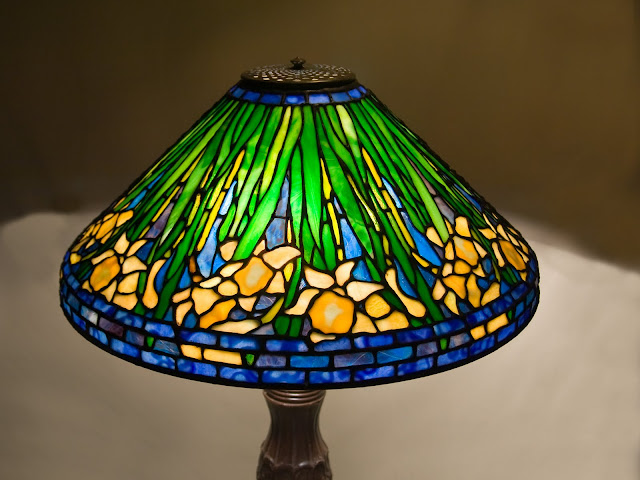I suspect every gardener can relate to this line from Herrick’s 17th century verse. All the beautiful plants of the garden somehow seem short lived… never have I said “I just can’t take another day of that blasted crab apple covered with sweet scented bloom in the backyard…” Actually though, it seems that the flowers that come on first in the season are the ones whose passing I dread the most. Fortunately we had a great spring this past year… oh, the people who love the heat of summer complained about how it just wouldn’t warm up… but those of us who really appreciate the sights and smells of an ornamental garden, were at the top of our game. No, it really wasn’t all that warm, nor was it all that cold! Individual blooms lasted and lasted. We had daffodils in bloom for about six weeks! Part of such success comes from planting specific varieties for a long season of bloom, so we do have many different varieties installed all about the yard… however, even with such an assortment, heat can cause a dreadfully short bloom season.

Some 38 years ago, while I was being seduced into the world of ornamental gardening by a much older and experienced gardening friend, my wife and I would be presented with lush bouquets of daffodils every spring. Our friend knew that it would only be a matter of time, and we would be hooked. How right she was, and I eventually got to the point where I ordered the infamous bushel of assorted daffodil bulbs from a well known nursery out east. I tell you, that winter lasted forever. I anxiously awaited the grand display that was promised in the spring… but it never came. Only two bulbs even sprouted foliage and I have no idea what happened to this day. I immediately assumed that I just couldn’t grow daffodils, and for many years I didn’t even try. Eventually, I realized that this made no sense at all, and little by little, the daffodils began to take their rightful place in our lives, with great success I might add. The obvious lesson is almost cliché… how often have we been told, “don’t give up on a plant until you’ve tried it three times.”

We do love the daffodils… start with one, and in the space of a few years, you have a dozen. The problem is of course, that the foliage persists forever. It is necessary for the production of next year’s blooms so I like to allow it to ripen fully. Sometimes, I just give up and remove it after a minimum of six weeks past bloom stage… that seems to work ok. Our best system involves planting the daffodils between daylilies so the foliage of the daylilies pretty much hides the ripening of the daffodil’s foliage. The large bed of approximately 200 varieties of daffodils pictured here will eventually transform into a hemerocallis garden, hiding the spent daffodil foliage, and having a whole new life in July and August!
Louis Comfort Tiffany certainly loved flowers and gardens. He particularly loved native and “unimproved” plants, although the double hybrid peonies struck his fancy as noted in yesterday's blog. Personally, I look forward to new hybrids that become available each year. I do have my limits though… some pretty ridiculous ‘creations’ end up being offered at times. I can very much appreciate the simpler singles in many flowers including roses and peonies, and I really dislike doubled hemerocallis. It seems that greater appreciation for the simpler blooms in the garden come with a gardener’s maturity… I recognize that the longer I garden, the more I appreciate gardening’s subtleties. To my mind, this is not unlike life in a very powerful way... as we age, the little and simple things hold more meaning for us as we come to appreciate their true depth and value.
With a bit of investigation on the web, one can come across the often viewed picture of a hand full of daffodils suspended downwards over a conical form at Tiffany studios. The picture gives an idea of how the artist used nature to inspire the flower shade designs. I recently completed my version of Tiffany Studio's Model 1497 which is the 20” diameter daffodil displayed at the top of this page. Doing daffodils in glass can be a challenge. Studying the mottles in a sheet of glass so as to incorporate them as trumpets in the blossoms takes time and patience. There are numerous other Tiffany designs incorporating daffodils. The 28” cone and particularly the 16” banded daffodils are two of my favorites.

This is one of my “glass botanicals” with my mortised and tenoned oak frame. In this case I’ve incorporated bits of drapery glass, which is generally used in magnolia designs, to give a sense of texture and depth.
The 17th c. poet soon comes to recognize that this life is fleeting as is that of the daffodil… “We have short time to stay, as you, we have as short a spring…“ This really doesn’t work all that well though… if any plant is certain to return next spring, it is the daffodil. Perhaps he was taking a bit of Baroque poetic license.
Until next time… LC






0 nhận xét:
Đăng nhận xét